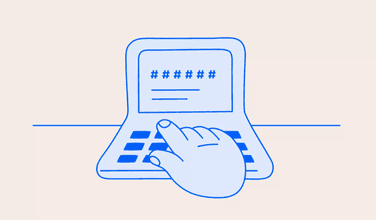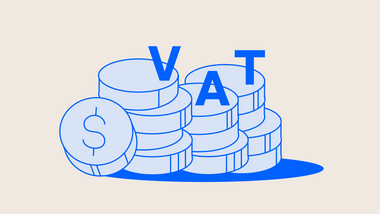Taxes for UK Business Owners: 2022/23 Tax Rates, Thresholds & Allowances
Our guide for owners of private limited companies helps you navigate the changing tax rates and allowances in 2022/2023.

Small business owners have double the responsibility when paying taxes: they account for themselves and their companies. To save you the struggle of keeping up with the shifting tax rates and allowances, we’ve put together a guide for owners of a private limited company to help you get through the 2022/2023 tax year.
Below are the tax rates and thresholds for 2022/23, and an overview of the most important factors you need to be aware of. This article is enough for you to make informed decisions; however, we recommend using a certified bookkeeping services provider to calculate and file your taxes with HMRC accurately.
Skip to:
Personal Tax RatesPersonal Allowance
Income Tax Rates and Tax Thresholds
Dividend Tax Rates
National Insurance Ratese
Employee’s & Employer’s National Insurance Contributions (NIC)
Self-employed National Insurance Contributions
Capital Gains Tax
Company Tax Rates
Corporation Tax
VAT Rate & Threshold
Mileage Allowances
Director Loan Rate
In Summary
Personal Tax Rates
Here we explain how personal allowance works, how much income tax a person is liable to pay depending on their earnings, and what else is affected by the income you receive throughout the tax year. Spoiler: the more money you make, the higher rates you are subject to. This works for dividend tax, income tax, capital gains tax, and even national insurance contributions.
Personal Allowance
The Personal Allowance (“tax-free allowance”) is the amount of money you can earn during a tax year without paying Income Tax on it. Currently, the standard personal allowance for the year 2022/23 is £12,570. As such, you will pay zero income tax on the first £12,570.
But what if you earn more than that? What if you make, say, £92,500? Then £12,570 of this won’t be taken into consideration when calculating your Income Tax, and your taxable income will be £79,930. Neat!
The deduction applies until you earn more than £100,000 within a tax year. This threshold is called the Income Limit for Personal Allowance. After you pass the £100,000 mark, the tax-free sum starts shrinking.
For example, a salary of £120,000, means you earn £20,000 more than the Income Limit for Personal Allowance. And 50% of that £20,000 will be deducted from your Personal Allowance:
£12,570 – £10,000 = £2,570
Thus, you won’t pay taxes on £2,570 of your income. Keep in mind that you do not get a Personal Allowance on taxable income over £125,140 because the 50% tax of your earnings of £25,140 will negate your £12,570 Personal Allowance.
| Personal Allowance Threshold | Sum |
|---|---|
| Personal Allowance | £12,570 |
| Income limit for Personal Allowance | £100,000 |
Income Tax Rates and Tax Thresholds
There are three rates which apply to your salary: basic, higher, and additional. The more you earn, the higher your income tax rate will be.
| Taxable Income | Tax Rate | How Much You Pay? |
|---|---|---|
| Up to £12,570 | - | 0% |
| £12,570 to £50,270 | Basic rate | 20% |
| £50,271 to £150,000 | Higher rate | 40% |
| Over £150,000 | Additional rate | 45% |
Dividend Tax Rates
The tax-free dividend allowance means if you receive £2,000 in dividends or less, you don’t pay tax on them.
Those who receive more than £2,000 in dividends must pay dividend tax:
| Taxable Income | Income Tax Rate | How much you pay on dividends |
|---|---|---|
| Up to £12,570 | - | 0% |
| £12,570 to £50,270 | Basic rate | 8.75% |
| £50,271 to £150,001 | Higher rate | 33.75% |
| Over £150,001 | Additional rate | 39.35% |
Sounds confusing? Here’s an example to show you how it works.
Suppose you get £4,000 in dividends and earn £40,000 in wages in the 2022 to 2023 tax year. Your salary would be subject to the basic rate of income tax. As such, you will have to pay the following amount:
£40,000 - £12,570 (basic wages – personal allowance) = £27,430 x 20% tax
No tax on the first £2,000 of dividends due to the dividend allowance
£2,000 of dividends x 8.75% tax
National Insurance Rates
You must pay National Insurance if you’re 16 and:
You are an employee earning above £242 a week OR you are self-employed and make a profit of more than £6,725 a year.
National Insurance bands and rates are different for employees, sole traders, and limited company directors.
Employee’s & Employer’s National Insurance Contributions (NIC)
Both the individual and their employer pay employee National Insurance contributions. However, it’s the employer’s responsibility to calculate his workers’ NIC and pay the correct amount.
National Insurance doesn’t apply if the employee earns less than £242 a week. If their salary is above this threshold, the employer is obliged to pay NICs equal to 13.8% of the employee’s earnings.
The employees’ National Insurance contributions (NICs) are usually calculated weekly, not annually, so that’s how we’ve presented them in the table below.
Employee’s National Insurance Contributions (NIC) Based on Weekly Earnings:
| Lower Earning Limit | The Primary Threshold | The Upper Earnings Limit |
|---|---|---|
| £123 | £242 | £967 |
| Employee doesn’t pay National Insurance | Employee starts paying National Insurance | Employee pays standard rate of National Insurance above this point, until earning above £50,270 |
| Employee gets NI benefits | Employee gets NI benefits | Employee gets NI benefits |
| Employee pays 13.25% on earnings over £242 | Employee pays 13.25% on earnings above £967 | |
| Employer additionally pays 15.05% on employee’s earnings | Employer additionally pays 15.05% on employee’s earnings |
Self-employed National Insurance Contributions
For sole traders the NIC class determines the sum you must pay, and the thresholds determine which classes apply to you. It’s easier to figure out than it sounds.
| The name of the threshold | 2022/23 |
|---|---|
| Small Profits Threshold | £6,725 |
| Lower Profits Threshold | £11,908 |
| Upper Profits Threshold | £50,270 |
So, if you earn less than £6,725 a year, you don’t have to pay NIC.
If you earn more than that, Class 2 NICs are applied: you are to pay a fixed rate of £3.15 per week (£163.8 a year).
If you earn £11,908 a year or more, Class 4 NICs are applied. Thus, you are to pay:
- 10.25% on profits between £11,908 and £50,270
- 3.25% on profits over £50,270.
Tadaa! Easy.
| Yearly Income | NIC Class Applied |
|---|---|
| £0 - £6725 | None |
| £6,725 - £11,908 | Class 2: £3.15 a week (£163.8 a year) |
| £11,908 - £50,270 |
Class 2: £3.15 a week (£163.8 a year) Class 4: 10.25% on £11,908-£50,270; 3.25% on profits over £50,270 |
Capital Gains Tax
Capital Gains Tax is a tax on the profit made when you sell something at a higher price than you originally paid. The state expects you to pay the tax when you dispose of:
- Personal possessions worth £6,000 and more
- When you sell property that’s not your main home
- Your main home if you’ve let it out, used it for business or it’s very large
- When you sell shares that are not in an ISA or PEP
- Business assets
Keep in mind that it is only the profit you make that is taxed, not the total amount you receive from the customer.
As mentioned by Scott Rubzin, founder at Tiffany Property Investment, every year you can enjoy an exemption from capital gains. The capital gains tax threshold for 2022/23 is £12,300. When you have exceeded this amount, your capital gains tax will be payable.
The rise in taxes has made it such that people are less likely to purchase homes. This is because they either pay off their mortgages completely or else sell for a loss, which means the government takes most of whatever gain there may be from selling property at an increased price - this doesn't just apply if you're dealing with real estate taxes either!-says George Beatty, founder of Problem Property Pals.
| Your Taxable Income | The Income Rate Tax | Gains from Residential Property | Gains from other Assets |
|---|---|---|---|
| £12,570 to £50,270 | Basic rate | 18% | 10% |
| 50,270 to £150,001 | Higher rate | 28% | 20% |
| Over £150,001 | Additional rate | 28% | 20% |
Company Tax Rates
It’s possible that your business doesn’t have to deal with all the taxes and allowances listed; your accountant will be able to advise you on this further. The one you can be sure about is Corporation Tax. As for VAT, there are many companies which are not yet registered. They are only obliged to do so after they make more than £85,000 on goods and services subject to VAT in one tax year.
Corporation Tax
Corporation Tax is applied to limited company profits after business expenses have been paid, but before dividends are withdrawn. For the financial year beginning on 1 April 2022, the Corporation Tax rate is 19%.
VAT Rate & Threshold
Value Added Tax is charged on most goods and services in the UK.
| 2022/23 | |
|---|---|
| Standard VAT rate (applicable to most goods and services | 20% |
| Reduced VAT rate (applicable to certain goods and services) | 5% |
| Zero VAT rate (applicable to some goods and services, such as food, children’s clothes, etc.) | 0% |
Note
Being subject to a zero VAT rate and being exempt from VAT are not the same thing.
The VAT Registration threshold is the amount of revenue at which your company must register for Value Added Tax. This tax year, you must register for VAT within 30 days after your business sold goods and/or services that aren’t exempt from VAT totalling £85,000. Both sole traders and limited companies are obliged to register for VAT once they pass this threshold or anticipate passing it in a single thirty-day period.
| 2022/23 | |
|---|---|
| VAT Registration Threshold | £85,000 |
On Flat Rate VAT scheme, companies use a predetermined VAT rate based on their industry type and pay the tax over to HMRC, while still charging customers the full 20%. However, you can’t reclaim the VAT on most of your purchases.
See the full list of industry-specific VAT flat rates
Mileage Allowances
If you and/or employees use vehicles for business purposes (deliver flowers, drive to another city to meet a new partner, etc.), you can count how many miles you travel and claim those rides to be business expenses. Thus, some money will be deducted from your taxable income and you will pay less corporation tax. If you don’t reimburse business mileage to your employees, you can’t claim the mileage allowance.
HMRC has determined how much money you can claim per mile. This is called the approved mileage allowance payments (AMAP). The rates depend on the vehicle type and on how high your mileage is:
| First 10,000 Miles | Over 10,000 Miles | |
|---|---|---|
| Car/van | £0.45 | £0.25 |
| Motorcycle | £0.24 | £0.24 |
| Bicycle | £0.20 | £0.20 |
Director Loan Rate
Many people may not know that it’s possible to get a loan from your limited company.
If at some point throughout the year the amount of money that you borrowed exceeds £10,000, you have to pay 2.5% nominal interest on the whole sum and also 15.05% of NIC. Loans unpaid within nine months of the company’s accounting period will incur corporation tax at 32.5%. Also, you may need to report the case on your P11D form — the one that details your “benefits in kind”. Speak with your accountant to understand this in more detail.
In Summary
Tip
Bookmark this page for when you need to make sense of the taxes you need to pay, as well as the rates and thresholds that will affect you. The UK tax system is complicated and individual to each type of company, so we recommend finding a certified accountant to guide your business through the tax season and explain all of the nuances that apply to you.
An average accountant prepares and files your papers in silence — a great accountant advises you on how to legally optimise your tax liability and ensures you have an answer to all your questions. Our accountants at Osome do just that, plus you have access to real-time financial insights through our accounting software. Join Osome accounting today!







